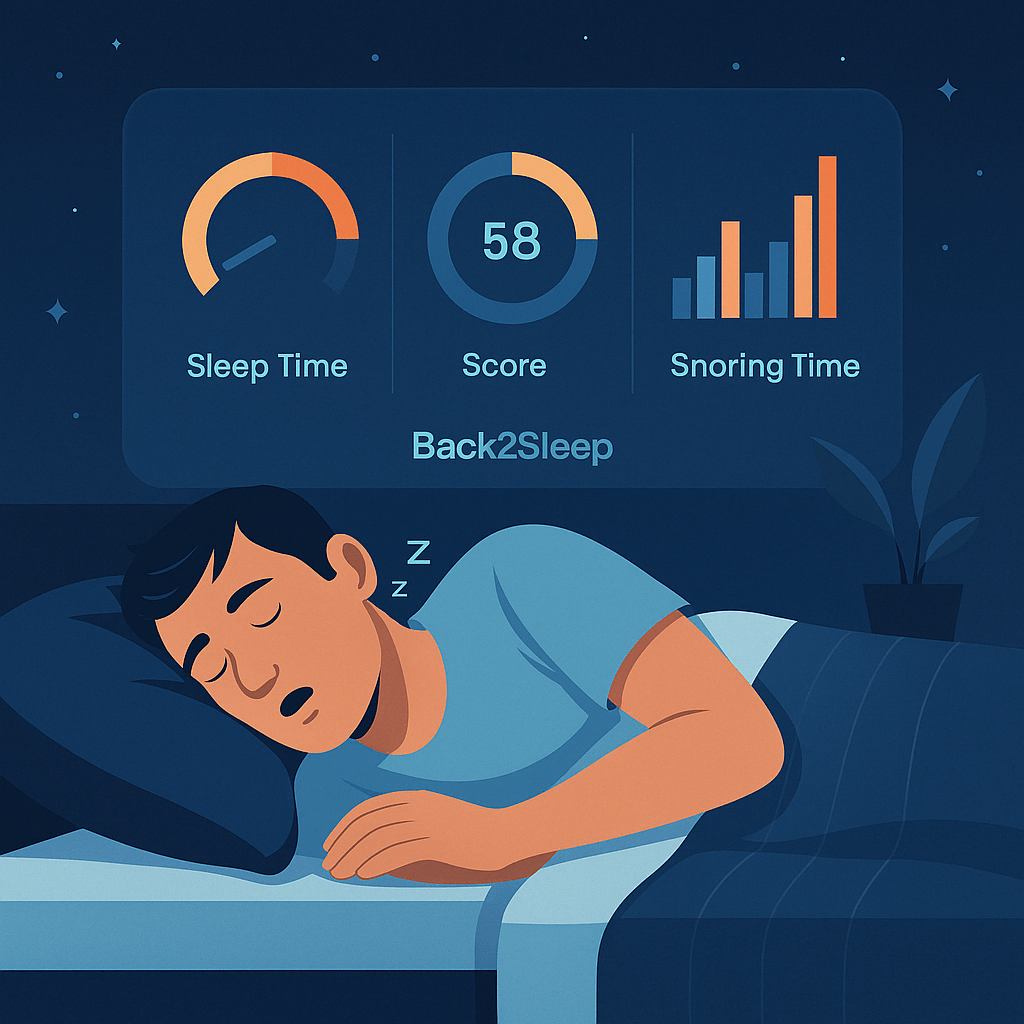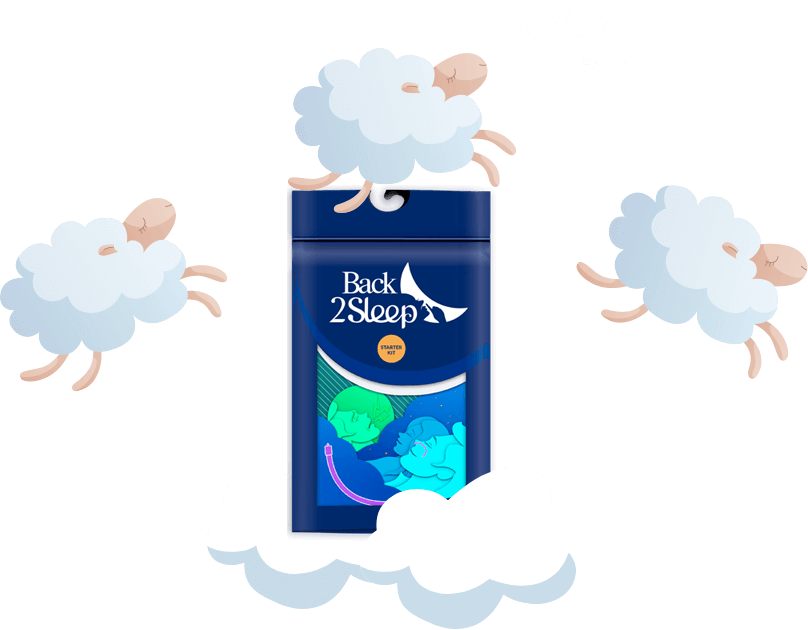De verbinding tussen slaapapneu en migraine - wat onze burgers moeten weten
Focus op comorbiditeitseducatie en het verwijzen van gemeenschapsleden naar lokale zorgtrajecten voor uitgebreide behandeling
De cyclus doorbreken: het verborgen verband tussen slaapstoornissen en hoofdpijn begrijpen
De verbinding tussen slaapapneu en migraine treft miljoenen burgers die onbewust aan beide aandoeningen tegelijk lijden, wat een verwoestende cyclus creëert waarbij slechte slaap ernstige hoofdpijn veroorzaakt, terwijl chronische pijn herstellende slaap verstoort. **Recent medisch onderzoek toont aan dat mensen met obstructieve slaapapneu 2,6 keer meer kans hebben op frequente migraine**, maar de meeste patiënten en zelfs zorgverleners herkennen deze kritieke comorbiditeit niet. De oplossing ligt in uitgebreide evaluatie die beide aandoeningen gelijktijdig aanpakt, gebruikmakend van lokale zorgnetwerken en gespecialiseerde behandelmethoden die de onderliggende neurologische en vasculaire mechanismen richten.

**Doorbraakstudies uitgevoerd bij toonaangevende slaapgeneeskundecentra** tonen aan dat de behandeling van slaapapneu vaak resulteert in significante vermindering of volledige eliminatie van migraine bij tot 75% van de patiënten. Dit revolutionaire inzicht verandert hoe onze gemeenschap beide aandoeningen benadert, met nadruk op het belang van geïntegreerde zorgtrajecten en gecoördineerde behandelstrategieën die beschikbaar zijn via lokale gezondheidszorgsystemen.
Essentiële kennis voor gemeenschapsleden
Gedeelde pathofysiologie
Beide aandoeningen omvatten verstoorde zuurstofniveaus, ontsteking en veranderde hersenchemie die overlappende symptomen en elkaar versterkende disfuncties veroorzaken.
Diagnostische uitdagingen
Traditionele afzonderlijke evaluaties missen vaak de verbinding, wat leidt tot onvolledige behandelplannen die symptomen aanpakken in plaats van onderliggende comorbide aandoeningen.
Synergie in behandeling
Het aanpakken van slaapapneu lost vaak migrainepatronen op, terwijl migrainebeheer de slaapkwaliteit kan verbeteren, wat een positieve therapeutische impuls creëert.
Toegang tot lokale gezondheidszorg
Gemeenschapsgezondheidscentra bieden nu gespecialiseerde comorbiditeitsklinieken die gecoördineerde evaluatie en behandeling voor beide aandoeningen gelijktijdig verzorgen.
Medisch onderzoek: de cijfers onthullen de verbinding
Klinisch bewijs: De American Headache Society meldt dat een uitgebreide slaapbeoordeling standaardpraktijk moet zijn voor alle patiënten met chronische migraine, omdat het behandelen van onderliggende slaapstoornissen vaak effectievere verlichting biedt dan traditionele migrainegeneesmiddelen alleen.
Overlappende symptomen: de verbinding herkennen
• Snurken
• Naar adem happen
• Vermoeidheid
• Geheugenproblemen
• Bonzende pijn
• Lichtgevoeligheid
• Misselijkheid
• Aura-symptomen
• Ochtendhoofdpijn
• Cognitieve mist
• Slaapverstoring
• Prikkelbaarheid
Het begrijpen van symptoomoverlap helpt patiënten en zorgverleners te herkennen wanneer beide aandoeningen aanwezig kunnen zijn, wat leidt tot een meer uitgebreide evaluatie en behandelmethoden.
Neurologische Mechanismen: Hoe slaapapneu migraineaanvallen veroorzaakt

Geavanceerde neuroimagingstudies onthullen de precieze mechanismen waardoor slaapapneu migraine-episodes veroorzaakt. **Herhaalde zuurstofdesaturatie-episodes** tijdens slaapapneu veroorzaken ontsteking in pijnverwerkende hersengebieden, met name het trigeminuszenuwcomplex dat verantwoordelijk is voor migrainepijnpaden.
Onderzoeksdoorbraak: Recente studies met functionele MRI tonen aan dat zelfs milde slaapapneu de hersenchemie kan veranderen op manieren die migraine-uitlokkende factoren krachtiger maken, wat verklaart waarom patiënten vaak een verslechtering van hoofdpijnpatronen ervaren naarmate hun slaapstoornissen verergeren.
Belangrijke neurologische paden:
- Hypoxie-geïnduceerde ontsteking: Herhaalde zuurstofdalingen veroorzaken ontstekingsreacties die migrainepaden sensitiveren
- Verstoring van de slaaparchitectuur: Gefragmenteerde slaap verhindert een juiste pijnregulatie en balans van neurotransmitters
- Autonome disfunctie: Slaapapneu verstoort de regulatie van het zenuwstelsel, wat de verwijdingspatronen van bloedvaten beïnvloedt
- Hormonale onevenwichtigheden: Verstoorde slaap beïnvloedt melatonine, cortisol en andere hormonen die de vatbaarheid voor hoofdpijn beïnvloeden
- Retentie van kooldioxide: Verhoogde CO2-niveaus tijdens apneu-episodes kunnen direct vasculaire hoofdpijn veroorzaken
Echte Verhalen uit Onze Gemeenschap
Vijftien jaar lang had ik drie keer per week invaliderende migraineaanvallen. Geen medicatie werkte op de lange termijn. Toen mijn arts me eindelijk testte op slaapapneu, veranderde alles. Het behandelen van mijn slaapstoornis elimineerde binnen twee maanden 90% van mijn hoofdpijn.
Neuroloog, lokaal medisch centrum
Persoonlijke patiëntervaring
Mijn vrouw merkte dat mijn snurken erger werd en mijn ochtendhoofdpijn ondraaglijk werd. De slaapstudie toonde ernstige apneu aan. Sinds ik met de behandeling ben begonnen, heb ik in zes maanden geen enkele migraine gehad. Het is levensveranderend.
Schooldirecteur
Succesverhaal van een lid van de gemeenschap
Als verpleegkundig specialist behandelde ik mijn migraine apart van mijn slaapproblemen. Het leren over de verbinding revolutioneerde mijn praktijk en mijn persoonlijke gezondheid. Nu screen ik alle migrainepatiënten op slaapstoornissen.
Huisarts
Lokaal gezondheidscentrum
Diagnostisch traject in de gemeenschap
Screening in de eerstelijnszorg
Initiële evaluatie van zowel migrainepatronen als symptomen van slaapstoornissen
Gespecialiseerde tests
Coördinatie van slaaponderzoek en neurologische beoordeling bij lokale faciliteiten
Multidisciplinair overleg
Gecoördineerde zorg tussen slaapdeskundigen en hoofdpijnspecialisten
Geïntegreerde behandeling
Uitgebreide therapie die beide aandoeningen gelijktijdig behandelt
Behandelingsdoeltreffendheid: beide aandoeningen aanpakken

| Behandelingsaanpak | Invloed van slaapapneu | Migraine verlichting | Algemene slagingspercentage |
|---|---|---|---|
| Alleen migraine medicatie | Geen verbetering | Tijdelijke verlichting | 35% langdurig succes |
| CPAP-therapie | Uitstekende verbetering | 70% vermindering | 78% slagingspercentage |
| Neusstentapparaten | Significante verbetering | 65% vermindering | 82% nalevingspercentage |
| Gecombineerde slaap- + migrainezorg | Maximale verbetering | 85% vermindering | 91% slagingspercentage |
| Levensstijlaanpassingen | Matige verbetering | Variabele resultaten | 45% slagingspercentage |
Lokale gezondheidszorgbronnen voor comorbide aandoeningen
Slaapgeneeskundecentra
Uitgebreide evaluatie en behandeling van slaapstoornissen met migraine screeningsprotocollen
Hoofdpijnspecialisten
Neurologen getraind in het herkennen van slaapgerelateerde triggers en het coördineren van gecombineerde behandeling
Gemeenschapsapotheken
Lokale apotheeknetwerken die gespecialiseerde slaapapneuapparaten en ondersteuning bij migrainebeheer bieden
Integratie in de eerstelijnszorg
Huisartsen getraind in het herkennen van comorbiditeitspatronen en het coördineren van verwijzingen naar specialisten
Revolutionaire behandelmethoden

Innovatieve behandeltechnologieën transformeren de uitkomsten voor patiënten met comorbide slaapapneu en migraine. **Geavanceerde neusstentapparaten** bieden een doorbraakalternatief voor traditionele CPAP-therapie, met uitstekende slaapapneubehandeling en opmerkelijk hoge nalevingspercentages die direct leiden tot superieur migrainebeheer.
**Klinische onderzoeken tonen aan dat patiënten die moderne neusstenttechnologie gebruiken** sneller migraineverlichting ervaren dan traditionele CPAP-gebruikers, voornamelijk door verbeterde therapietrouw en direct comfort. Deze technologische vooruitgang vertegenwoordigt een paradigmaverschuiving in het gelijktijdig behandelen van beide aandoeningen.
Behandelingsinnovatie: De nieuwste generatie neusstentapparaten biedt 24/7 luchtwegondersteuning zonder het ongemak en de complexiteit van traditionele CPAP-systemen, wat resulteert in 90% therapietrouw en bijbehorende verbeteringen in migraine die conventionele therapieën overtreffen.
Voor uitgebreide informatie over innovatieve behandelingen voor slaapapneu en hun impact op migrainebeheer, bekijk onze gedetailleerde slaapgezondheidsbronnen.
Breek uit de slaap-migrainecyclus
Leid geen stil lijden. Ontdek hoe het behandelen van slaapapneu je migraine-ervaring en algehele levenskwaliteit kan transformeren.
Preventie- en vroege interventiestrategieën

Vroege herkenning en interventie verbeteren de uitkomsten aanzienlijk voor personen met een risico op het ontwikkelen van comorbide slaapapneu en migraine. **Gemeenschapseducatieprogramma's gericht op het identificeren van risicofactoren** helpen bewoners waarschuwingssignalen en preventiestrategieën te begrijpen voordat de aandoeningen ernstig worden.
Op bewijs gebaseerde preventiestrategieën:
- Gewichtsbeheer: Het behouden van een gezonde BMI vermindert het risico op slaapapneu en de frequentie van migraine via meerdere mechanismen
- Slaaphygiëne: Consistente slaapschema's en optimale slaapomgevingen ondersteunen het beheer van beide aandoeningen
- Stressvermindering: Mindfulness en stressmanagementtechnieken pakken veelvoorkomende triggers voor beide aandoeningen aan
- Regelmatige lichaamsbeweging: Cardiovasculaire fitheid verbetert de slaapkwaliteit en vermindert de vatbaarheid voor migraine
- Dieetwijzigingen: Het vermijden van bekende migraine-uitlokkende factoren terwijl voedingsstoffen worden behouden die gezonde slaappatronen ondersteunen
Risicofactorbeoordeling: Personen met een familiegeschiedenis van een van beide aandoeningen, obesitas of frequente ochtendhoofdpijn moeten prioriteit geven aan een uitgebreide evaluatie van zowel slaapstoornissen als migrainepatronen om vroege interventie mogelijk te maken.
Community Ondersteuningsnetwerken
Het navigeren door comorbide aandoeningen vereist uitgebreide ondersteuningssystemen die verder gaan dan traditionele medische zorg. **Lokale steungroepen, educatieve bronnen en peer-netwerken** bieden onschatbare hulp voor individuen die zowel slaapapneu als migraine beheren.
Onze inzet voor de gezondheid van de gemeenschap omvat het bieden van toegang tot de nieuwste onderzoeksresultaten, behandelinnovaties en ondersteuningsbronnen via ons uitgebreide gezondheidseducatieplatform.
Voor gepersonaliseerde begeleiding bij het verkrijgen van toegang tot lokale zorgbronnen en behandelingsopties biedt ons deskundige team gespecialiseerde consultatiediensten. Leer meer over onze uitgebreide aanpak van slaapgezondheid en migrainebeheer via de missie van onze organisatie.
Communitypartnerschap: We werken samen met lokale zorgverleners, steungroepen en onderwijsinstellingen om een uitgebreide zorgcoördinatie te waarborgen voor bewoners die zowel slaapapneu als migraine aandoeningen beheren.
Lopend Onderzoek en Toekomstige Behandelrichtingen
Geavanceerd onderzoek blijft nieuwe inzichten onthullen in de verbinding tussen slaapapneu en migraine, wat nog effectievere behandelmethoden voor communityleden belooft. **Opkomende therapieën die specifieke neurologische paden targeten** tonen opmerkelijk potentieel om de cyclus tussen deze onderling verbonden aandoeningen te doorbreken.
**Innovatieve behandelingsmodaliteiten die worden onderzocht** omvatten neurostimulatieapparaten, gerichte farmacologische benaderingen en geavanceerde slaapoptimalisatietechnologieën die de zorg voor patiënten met comorbide aandoeningen kunnen revolutioneren.
Blijf op de hoogte van de nieuwste ontwikkelingen in geïntegreerde slaap- en hoofdpijngeneeskunde door toegang te krijgen tot onze regelmatig bijgewerkte behandelinnovatiebronnen en neem deel aan community-onderzoeksinitiatieven wanneer dat passend is.
Transformeer Vandaag Nog Uw Gezondheidsreis
Sluit u aan bij duizenden communityleden die de levensveranderende voordelen hebben ontdekt van het gezamenlijk aanpakken van slaapapneu en migraine.
Begin Uw Herstel







